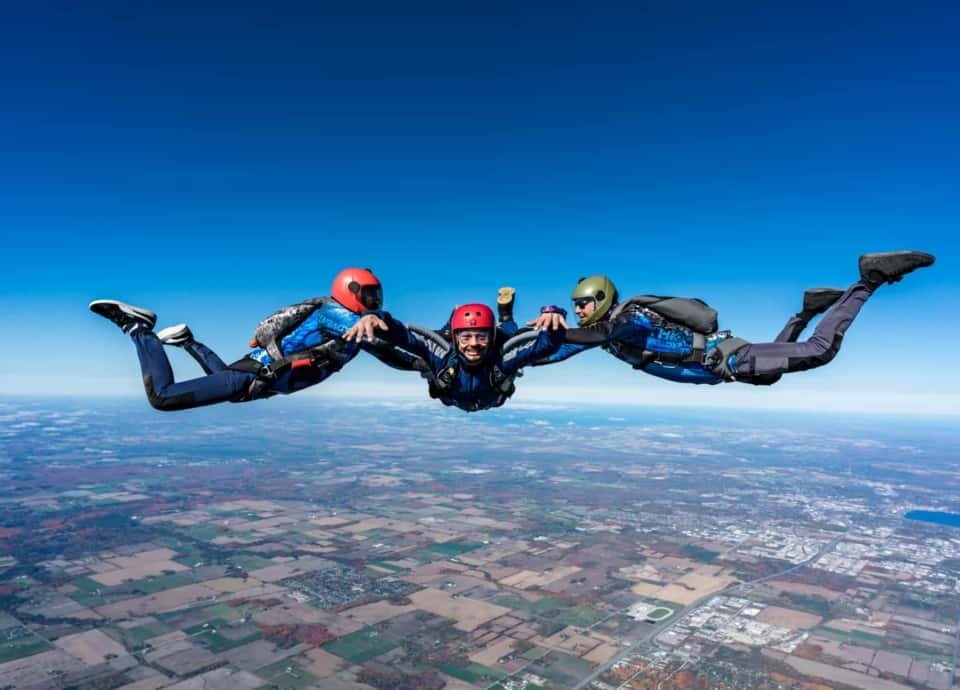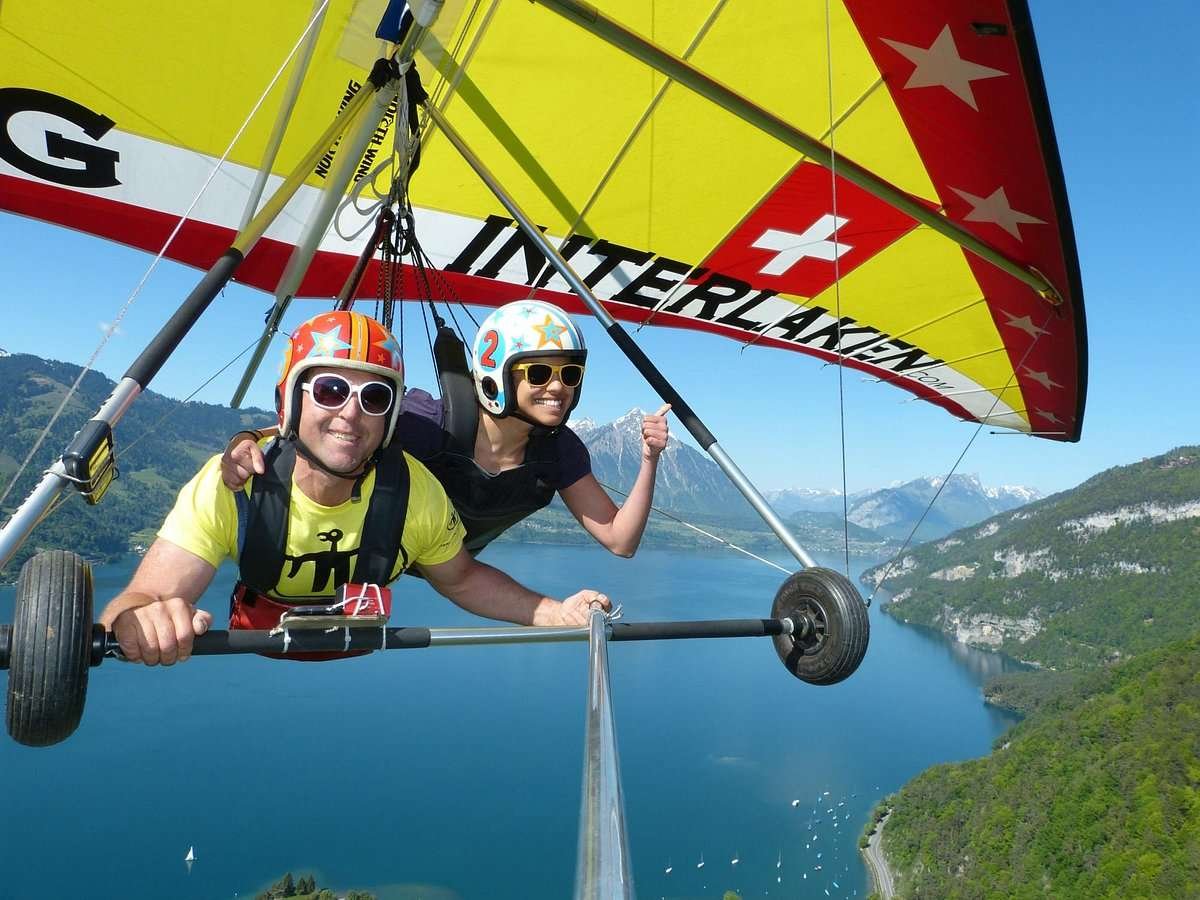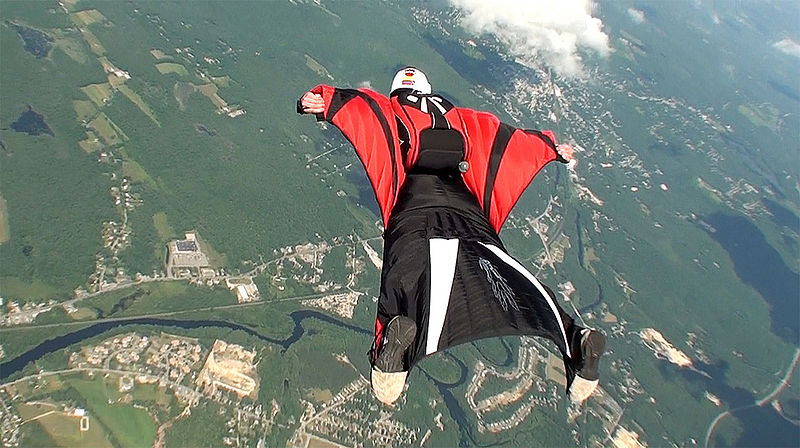Aerial sports require courage and a little bit of insanity. The extreme sports have grown in popularity over the years for adrenaline junkies trying to find a new exhilaration. Everyone I know who participates told me that they were afraid at first, but once they did it they had to do it again.
I have tried bungee jumping, skydiving, and hot air ballooning, it is a trip, but heights are not really my cup of tea. But I do understand the attraction. I love downhill skiing, it gives you freedom and it is a form of flying. There is something magical about being on a mountain top and taking the plunge downhill.
Ballooning 
Hot air ballooning is a recreational and competitive adventure sport that is fun and safe. It is appealing for its exceptional quiet, the lack of a feeling of movement, and the bird’s-eye view. The passengers feel absolutely no wind, except for brief periods during the flight when the balloon climbs or descends. Hot air ballooning has been recognized by Fédération Aéronautique Internationale (FAI) as the safest air sport in aviation, and fatalities in hot air balloon accidents are rare, according to statistics from the National Transportation Safety Board (NTSB).
Skydiving

Skydiving is a method of free falling from an airplane. It involves the period before the parachute is deployed and the body gradually accelerates to terminal velocity. Formation Skydiving (FS) was born in California during the 1960s.
The U.S. Parachute Association (USPA) issues licenses and ratings, governs skydiving, and represents skydiving to government agencies. Several different groups offer competitions though the majority of jumpers tend to be non-competitive, enjoying the opportunity to skydive with their friends on weekends and holidays.
Bungee Jumping 
Bungee jumping involves jumping from a great height while connected to a large elastic cord. The launching pad is usually a tall structure, building, crane, bridge across a deep ravine, or cliff. The thrill comes from the free-falling and the rebound. When the person jumps, the cord stretches and the jumper flies upwards again as the cord recoils, and continues to oscillate up and down until all the kinetic energy is dissipated.
Hang Gliding

Hang gliding is an air sport in which a pilot flies a light, non-motorised aircraft called a hang glider. Most modern hang gliders are made of an aluminum alloy covered with a synthetic sailcloth to form a wing. The pilot is in a harness suspended from the airframe, and controls the aircraft by shifting body weight in opposition to a control frame.
Early hang gliders had a low lift-to-drag ratio, so pilots were restricted to gliding down small hills. By the 1980s this ratio significantly improved, and since then pilots have been able to soar for hours, gain thousands of feet of altitude in thermal updrafts, perform aerobatics, and glide cross-country for hundreds of miles.
Gliding

Gliding is a recreational activity and competitive air sport in which pilots fly unpowered aircraft known as gliders using currents of rising air in the atmosphere to remain airborne.
Gliding as a sport began in the 1920s. Initially the objective was to increase the duration of flights but soon pilots attempted cross-country flights away from the place of launch. Improvements in aerodynamics and in the understanding of weather phenomena have allowed greater distances at higher average speeds. When conditions are favourable, experienced pilots can now fly hundreds of miles before returning to their home airfields.
Wingsuit Flying

Wingsuit flying is the sport of skydiving using a webbing–sleeved jumpsuit to add webbed area to the diver’s body and generate increased lift, which allows extended air time by gliding flight rather than just free falling. The wingsuit uses a pair of fabric membranes stretched flat between the arms and thighs to imitate an airfoil, and often also between the legs to function as a tail and allow some aerial steering. A wingsuit flight usually ends by deploying a parachute.
High Diving

High diving is the act of diving into water from relatively great heights. High diving can be performed as an adventure sport, as a performance stunt, or competitively during sporting events.
It debuted at a FINA event at the 2013 World Aquatics Championships in Barcelona, after the sport was added to the federation’s list of disciplines. In the world championships men generally dive from a height of 72–89 feet, while women dive from a height of 59–75 feet.
Ski Jumping

Ski jumping is a winter sport in which competitors aim to achieve the farthest jump after sliding down on their skis from a specially designed curved ramp. Along with jump length, competitor’s aerial style and other factors also affect the final score. Ski jumping was first contested in Norway in the late 19th century, and later spread through Europe and North America in the early 20th century. Along with cross-country skiing, it constitutes the traditional group of Nordic skiing disciplines.
Ski jumping has been included at the Winter Olympics since 1924 and at the FIS Nordic World Ski Championships since 1925. Women’s participation in the sport began in the 1990s, while the first women’s event at the Olympics has been held in 2014. All major ski jumping competitions are organised by the International Ski Federation.



